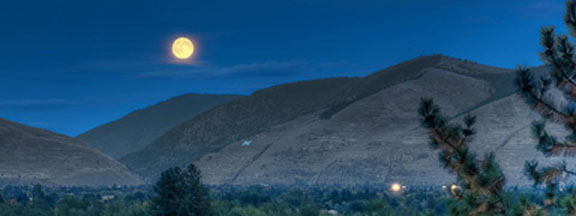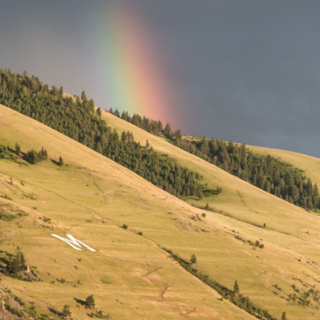Mount Sentinel
Mount Sentinel is so much more than the M Trail! The grassy face of Mt Sentinel is comprised of 1000 acres of native prairie, of which 500 acres are part of the City of Missoula Open Space Program (Parks and Recreation) and 500 acres are part of the UM Campus. The forests on the top and back of Mt Sentinel are Ponderosa pine and Douglas fir. The mountain is home to black bears, mountain lions, coyotes, foxes, many species birds, over a hundred species of native plants, as well as reptiles and insects.

The UM portion of Mt Sentinel is managed for natural areas values (conservation of native plants and animals) and for educational and research opportunities.
There are two primary conservation issues on Mt Sentinel: recreational impacts and invasive plants.
Invasive plants are species that were introduced the Montana from other ecosystems, and grow so aggressively that they out-compete native plants and result in serious losses of biodiversity. Examples include spotted knapweed, leafy spurge, Dalmatian toadflax, cheat grass and sweet clover.
Most invasive plants are also legally categorized as “Noxious Weeds,” meaning that state and county laws require that those plants are controlled. UM complies with state and local laws, and operates an integrated weed management plan for noxious weeds. Our efforts include hand pulling, spraying herbicides, minimizing introduction of new weeds (prevention and education). All of the known biocontrol insects for spotted knapweed, leafy spurge, Dalmatian toadflax and St Johnswort are also present on Mt Sentinel. Finally, we work hard to revegetate disturbed areas with native plants, reducing opportunities for weeds to establish.
Recreational impacts include serious erosion (from trail cutting as well as “normal” erosion), and to a lesser degree, littering and dog etiquette. Please respect trail closures on Mt Sentinel, stay on well -established trails, and join community work days to repair heavily used trails. These typically happen in October and April, and are noticed at the bottom of the M Trail.
Give to the UM Natural Areas Fund
Photo credit: Moon Over Mount Sentinel, Mark Mesenko
